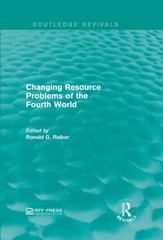Question
Question 1 During the Great Recession, policy makers were not as worried as usual about the lags associated with discretionary fiscal policy because: a. the
Question 1
During the Great Recession, policy makers were not as worried as usual about the lags associated with discretionary fiscal policy because:
a. the severity of the recession led Congress to pledge to pass a bipartisan spending package immediately.
b. the economy was likely to be depressed for a long time, so the lags were not likely to be as destabilizing as usual.
c. businesses had pledged to respond quickly to the lower interest rates.
d. the financial sector of the economy was not affected by the recession and was ready to make loans to consumers and businesses.
Question 2
An increase in the nation's _____ is generally accepted as a long-run indicator of a rising standard of living.
a. unemployment rate
b. output per person
c. inflation rate
d. trade deficit
Question 3
Challenges to Keynesian economics were based on the:
a. fact that lags in fiscal policy make it relatively ineffective.
b. possibility of a trade-off between inflation and unemployment.
c. liquidity trap, which makes fiscal policy ineffective.
d. usefulness of discretionary fiscal policy.
Question 4
The classical school of economics:
a. advocates the use of discretionary fiscal policy.
b. emphasizes the flexibility of wages and prices.
c. has a problem with potential output, since potential output cannot be achieved without active policy.
d. emphasizes the short run.
Question 5
A survey reveals that, on a small island, initially 1,000 people have jobs, 200 people are unemployed but are looking for jobs, and 200 people are neither working nor looking for work. Suppose that 100 of the 200 people who weren't looking for work now begin looking for work and that half of the new entrants find a job. The unemployment rate:
a. rises to 19.2%.
b. rises to 21.4%.
c. Nothing happens to the unemployment rate.
d. rises to 28.6%.
Question 6
The fact that many stores in the United States have found it economical to accept credit cards has:
a. increased the demand for money.
b. increased the demand for credit card transactions but has not affected the demand for money.
c. decreased the demand for credit card transactions but has not affected the demand for money.
d. decreased the demand for money.
Question 7
From early 2014 to early 2016 the dollar rose about _____% on average.
a. 15
b. 10
c. 5
d. 20
Question 8
Saving deposits are counted in:
a. M2 but not in M1.
b. M1, M2, and the gold stock.
c. vault cash but not in M2.
d. M1 but not in M2.
Question 9
When the Treasury Department borrows from the public to finance the government's purchases of goods and services and the Fed buys the debt back from the public in the form of Treasury bills, it is known as:
a. monetizing the debt.
b. moral suasion.
c. money illusion.
d. structuring the deficit.
Question 10
A decrease in the demand for money would result from a(n):
a. increase in income.
b. increase in nominal GDP.
c. decrease in the price level.
d. increase in real GDP.
Step by Step Solution
There are 3 Steps involved in it
Step: 1

Get Instant Access to Expert-Tailored Solutions
See step-by-step solutions with expert insights and AI powered tools for academic success
Step: 2

Step: 3

Ace Your Homework with AI
Get the answers you need in no time with our AI-driven, step-by-step assistance
Get Started


